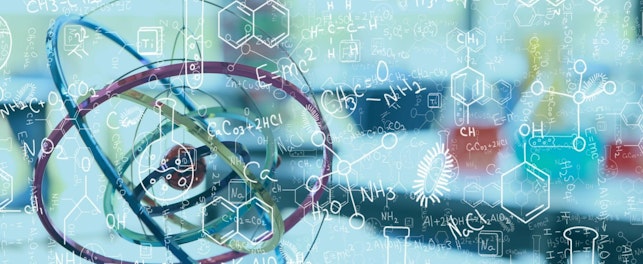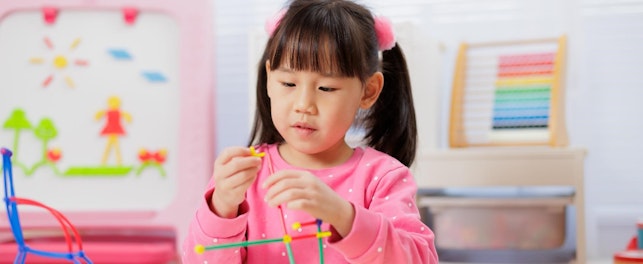The world is being swamped by discarded packaging. Consumers, governments and industry are now responding with more sustainable packaging options.
It is predicted the global population will reach 9.3 billion and resource consumption will triple, to 140 billion tons a year, by 2050.1 With more and more societies being defined by consumption, it has become necessary to ‘decouple’ economic growth and human well-being from resource consumption.2
Packaging is an inevitable part of our global markets. It is needed to protect products during transportation and display them in the retail environment. The requirement for robust packaging has been highlighted during the COVID-19 pandemic, as more and more consumers have shifted their shopping habits from ‘bricks and mortar’ stores to online retail outlets.
European Union (EU) figures from 2018 found that, on average, each citizen generated 174 kg of packaging waste a year. Between Member States, the amount of packaging differed, with Germans producing 227.5 kg and Croatians 67.8 kg.3 The same disparity is reflected across the world, with more developed countries using more packaging and creating more waste.
Unsurprisingly, the majority of the EU’s packaging waste is made from paper and cardboard (40.9%). This was followed by plastic (19%), glass (18.7%), wood (16.1%) and metal (5%).4
Environmental Impact
Consumers, governments and manufacturers can no longer ignore this problem. The widespread use of single-use packaging containers is unsustainable. Consumers are now awake to the impact of this behavior on the environment and many are now demanding change.5 While the main target for many individuals and organizations is currently single-use plastic, the amount of packaging our habits generated, especially during lockdowns, mean sustainable alternatives must now be found for all forms of packaging.Packaging Waste Management
U.S. Environmental Protection Agency (EPA) figures from 2018 showed 54% of all packaging waste was recycled, 9% was turned into energy, and 37% was sent to landfill. Breaking these figures down into types of packaging, municipal solid waste included paper and cardboard (11.4%), plastic (5%), wood (3.9%), glass (3.3%), steel (0.8%) and aluminum (0.7%).6
The variety of packaging materials means there can be no single solution to the problem. Each material will require a different approach. For example, paper and cardboard are biodegradable, while plastic is not. While both can be recycled, there are multiple problems associated with the processing and reuse of recycled plastics (see Answering the Problems of a Circular Economy for Food Contact Plastics).
Glass can be infinitely reused without loss of quality but there are issues over the recycling process. Single-stream recycling, in which all forms of glass are processed at the same time, results in only 40% of the material being reused. In comparison, 90% of multi-stream materials are recycled. In the US, only 33% of the ten million metric tons of glass that is discarded every year are recycled, but in Switzerland the figure is 91%.
Steel and aluminum are two more materials that can be recycled indefinitely without quality loss. In Europe, it is estimated 82.5% of steel packaging and 76.1% of aluminum beverage cans are recycled but, in the US, only 50.4% of aluminum beverage cans are recycled.
The most difficult types of packaging to recycle are those defined as multilayer packaging, which are commonly used for the conveyance of foods and beverages. US EPA figures from 2018 showed that only 20.6% of the ‘other’ category of packaging, which includes multilayer packaging, was used for energy recovering and the rest (79.4%) went to landfill.7Regulatory Pressure
Visible signs of this consumption on the planet and consumer pressure mean authorities are now beginning to respond. Sixteen US states now have regulations that specifically target packaging waste, and it is expected that the number will rise. These regulations target both the materials and the ways in which they are recycled.8
Elsewhere, France, Germany and the UK are introducing fees for non-recyclable packaging.9 Thailand and Chile are introducing bans on plastic bags.10 Mexico City has introduced a ban on most single-use plastic items.11 China has set out plans to improve recycling, banned plastic bags, and introduced measures to reduce single-use plastic consumption.12
This is just a small percentage of the regulations that are being proposed and implemented around the world that will affect packaging choices in the future.
Response
Many brands are already responding to the need for more sustainable packaging options. This often involves rethinking the design of packaging and the delivery chain.13 Almost all of the top 100 fast-moving consumer goods (FMCG) companies have now made commitments to drive sustainability, and the top ten are aiming at 100% sustainable packaging by 2025.14
Options being explored by companies include the introduction of returnable packaging systems using metal or glass, the removal of unnecessary packaging materials and/or their replacement with lightweight alternatives, simplified packaging, and the increased use of recycled or compostable/biodegradable materials.
To achieve true sustainability, the response must incorporate all these approaches with the ultimate objective of making packaging materials recyclable once they have fulfilled their purpose. There is evidence that a brand’s reputation will be enhanced, and consumers will recycle, if it is clear what the recycled materials will become.15
SGS solution
SGS offers a one-stop solution to help manufacturers produce and supply sustainable packaging to clients operating in markets around the world. Services include:
- Sustainable fiber services for paper and cardboard packaging
- Recyclability and re-pulpability of Paper
- Determination of percent recycled content
- Determination of mixed tropical hardwoods
- Analytical testing of substrates, inks and adhesives for known “bad actors”
- Biodegradability and composability testing
- Recyclability assessment for packaging
- Sustainable packaging design and prototyping
- Consultation, labeling, guideline and policy development
- Life cycle analysis
- Cradle-to-cradle certification
After all, it’s only trusted because it’s tested.
Learn more about SGS Packaging services.
For more information, please contact:
John O'Connell
Global Packaging Director
Connectivity & Products
t: +1 862 200 0916
References
1 Global resource consumption to triple by 2050: UN
2 Decoupling Natural Resource use and Environmental Impacts from Economic Growth
3 Waste generation by packaging material
4 Waste generation by packaging material
5 Global Initiatives to Reduce Single-Use Plastics
6 Containers and Packaging: Product-Specific Data
7 Containers and Packaging: Product-Specific Data
8 San Francisco Bans Polystyrene Foam-Containing Products and Defines Standards for “Green” Plastics & California Defines PET Plastic to Facilitate Recycling
9 Germany: New Packaging Law Sets New Targets For Packaging Recycling & France to make non-recyclable packaging more expensive
10 Thailand begins 2020 with plastic bag ban at major stores & Chile bans plastic bags for businesses
11 Mexico City Says Goodbye to Single-use Plastics
12 China’s radical new rules to recycle rubbish & China gets tough on firms over single-use plastics
13 Better Consumer Product Packaging With ISTA Certification
14 FMCG firms aim for 100% sustainable packaging by 2025, Kearney analysis shows
15 People recycle more when they know what recyclable waste becomes



